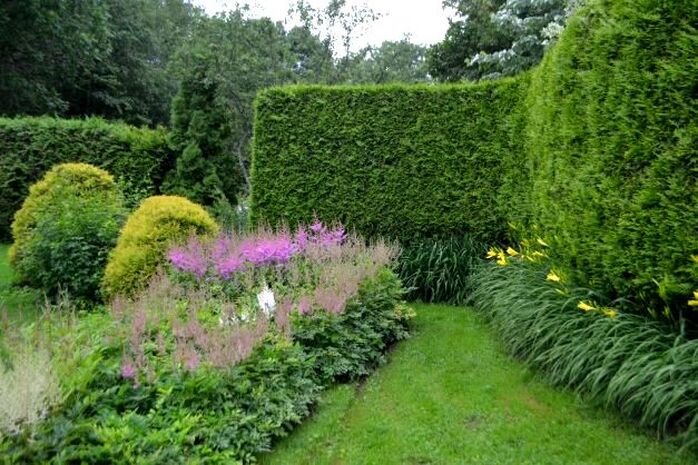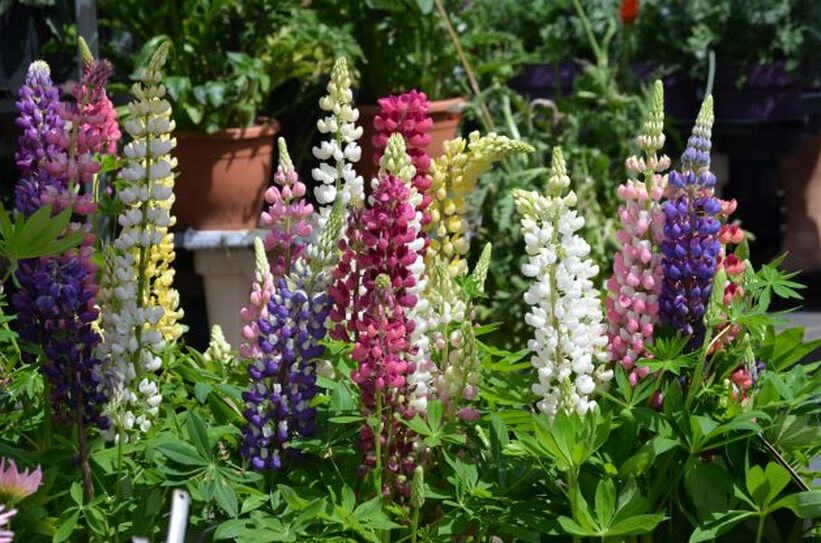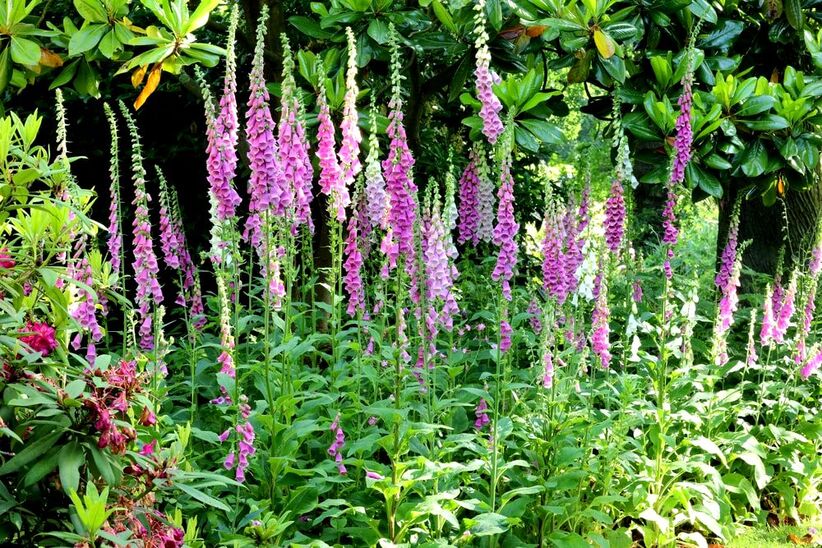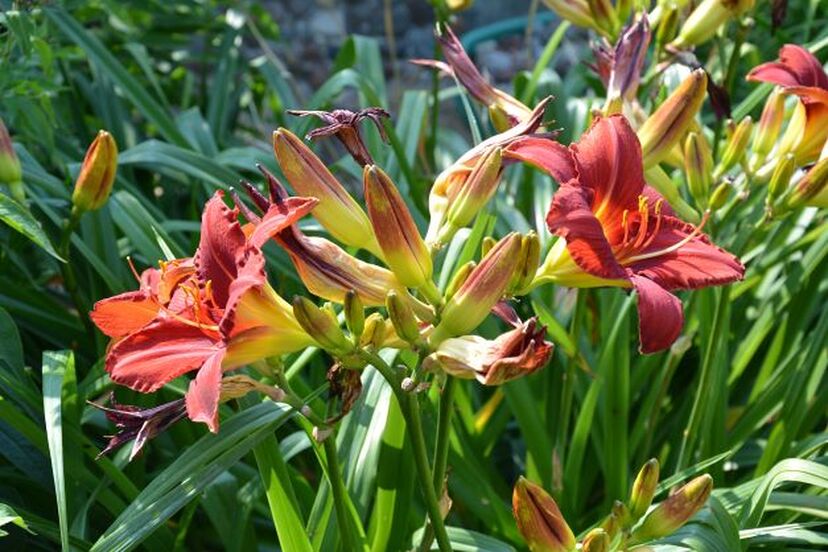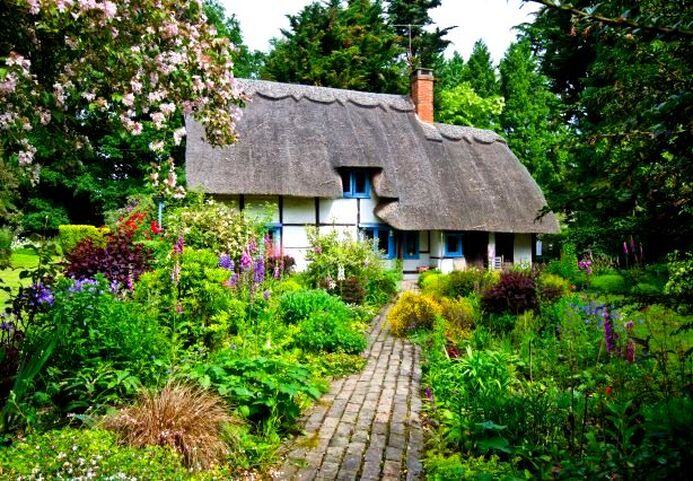|
This article contains affiliate links
Cottage gardens provoke thoughts of generous borders full of attractive flowering plants and formal lawns.
To create successful cottage borders you need a reasonable understanding of planting design. Not only do you require knowledge of plants you also need to be able visualise the end product. This is a skill which some people find easier than others. Cottage garden borders are typical of horticultural show gardens and stately homes. This is because cottage borders are famous for being long and wide! Consequently, it is difficult to throw a few plants together you like and expect a good result. Cottage garden borders need to implement; structure, texture, colour balance, contrasts and seasonal interest. However, with a little planning, precedent and research it is not impossible to create world class planting displays. Here I will explain the main elements of creating a beautiful cottage garden border. Cottage garden border design
The way to create a successful cottage garden border is with good planning. The key is to have an idea of what your finished planting scheme will look like. This is easier said than done but there are strategies to make it easier. Sketching is a great way to scribble down ideas and colour combinations. Alternatively if you are not a good drawer you can use collage or graphic design programs. Below, I have listed the five main fundamental elements of creating successful cottage garden borders. Structure
As cottage garden borders are typically wide, structure becomes a vitally important element. You will want to make sure that taller plants go at the back and shorter at the front. This sounds simple but don’t forget larger shrubs my take longer to establish. Therefore you may need to purchase larger background specimens first. However, cottage garden borders do not have to follow this rule. Very often, cottage garden planting is designed to form pyramids of vegetation and flowers within borders. This allows for some surprise and discovery as you travel along flower beds. Texture
Texture is something not all gardeners consider. However, in planting design, a variation of visual textures can really create a fantastic display. In traditional cottage gardens many borders are planted in front of yew hedges. This is because regularly clipped yew has a very fine texture. This creates the perfect backdrop to appreciate the individual qualities of plants. Different textures can also be appreciated at different distances depending on your gardens design. For this reason it is good to experiment with different foliage sizes and shapes. Colour
Colour is a real consideration for anyone creating a cottage garden border. Not only will this be important for individual flowers but surrounding flowering species. Some colours work well together like red and white while others do not. You also will need to factor in what months of the year individual plants will flower. Considerations of colour are not just restricted to flowers but also foliage. You may wish to look at planting plants with varying foliage colours and seasonal variation. Contrast
Contrast can be integrated into cottage borders in a number of ways. Backdrops to beds such as walls, fences and hedges can act as the perfect backdrop. Bold foliage flowers and forms can create much visual interest against vertical backdrops. This is also the case for expanses of lawn to the front of borders. Contrasts can also be created by mixing different flowers and foliage types together. Seasonal interest
Cottage gardens are well known for their seasonal variation and change throughout the year. It is common for cottage garden borders to utilise perennial plants for summer flowering. This results in a continuous cycle of death and re-growth. Such planting lends itself to incorporating seasonal change throughout the year. You will want to include; early flowering bulbs, summer blooms, autumn colour and winter interest. Precedent
If the whole idea of creating your own cottage garden border is intimidating don’t despair. As long as you take extra time to plan you should reach a good outcome. One of the very best ways of getting inspiration is by exploring precedent. A fun way to do this is by visiting existing cottage gardens at sites such as Great Dixter or Wisley. If you do not live locally to such locations you can search for inspiration online. Creating a collage of cottage garden borders you like will set you on the correct path. Soil preparation for cottage borders
Historically cottage garden borders were always rich in essential plant nutrients. A high fertility was due to seasonal applications of animal manures and ashes from the fire. This provided excellent nutrition to grow perennial plants, herbs and vegetables. Consequently if you create a cottage garden border you will have to ameliorate the soil. Why not visit our article on how to improve your garden soil here. In a nutshell you will want to dig over the soil to break up clods and create a loose texture. By adding organic matter and manure you can improve structure and fertility levels. Planting cottage garden borders
When planting cottage garden borders it is important to understand how large individual plants will grow. This will allow you to leave enough room for them to reach their full potential. It is much more cost effective to buy smaller plants when starting a new border. This means you may need the borders to establish for a couple of seasons to reach full capacity. Autumn is the best season to plant a cottage garden border as the weather is still warm. This will allow your plants some time to settle in before the new growing season. Once your plants are planted make sure they are watered in well. Establishment
Like any plant, once planted, there will be an initial establishment period. During this time your newly planted plants will spend more energy putting down new roots. If you have planted in autumn don’t expect much new growth until late spring. During this establishment stage it is important to keep plants well weeded and protected from pests. If you have planted during the growing season you will need to keep plants watered and weeded regularly. To make this process easier you may wish to spread a layer of mulch over your newly planted plants. Mulching
Mulch is a fantastic material and effective way to suppress weeds from flower beds. Not only will mulch help to control weeds it will also retain moisture and improve your soil. There are many organic materials which can be used as mulch. Some of these include Wood chippings, bark, leaf mould and compost. For an aesthetic look ornamental bark mulches look the most effective. For good results make sure you spread your mulch to a depth of 50mm. Cottage garden border maintenance
Once your cottage garden border is established you will need to undertake seasonal maintenance. This will keep your beds at their very best and looking beautiful year after year. Because cottage borders utilise many perennials you will have to clear away dead vegetation in winter. You will also have to weed between plants and lightly turn the soil. This is to encourage annual flowers to reseed themselves for the following spring! There is also an ongoing opportunity to lift and divide bulbs and spreading perennials. These can be used to expand planting areas or to provide gifts for friends. Meadows
Many cottage garden borders are described as having similar vegetation and flowers to meadows. This makes wildflower meadows an extra opportunity for the cottage garden! If your cottage garden has expansive areas of lawn why not consider turning some into meadow. These can be established in organic drifts around trees and other spaces. If you like this idea, check out our article on how to create meadow from existing lawn here. 10 Typical cottage garden plants
1. Lupin
|
The Author
|
Landscaping services across Buckinghamshire, Amersham, Aylesbury & High Wycombe
Hyde Heath, Amersham, Buckinghamshire |
|



